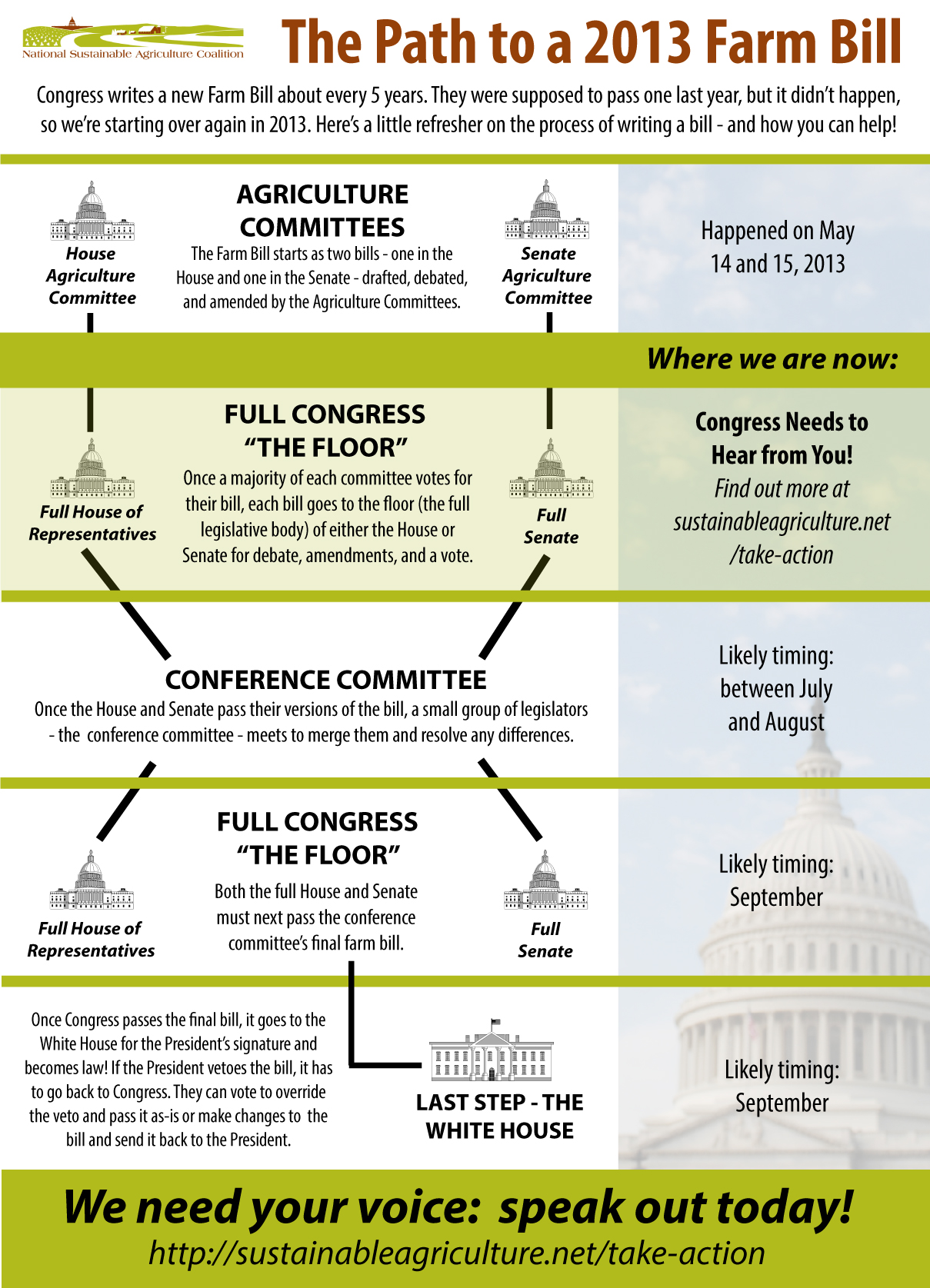Farm Bill 2013: A Mixed Bag
Last week, the Senate and House Agriculture Committees both passed a Farm Bill, and on Monday, May 20, debate on the Senate Ag Committee bill (S. 954 The Agriculture Reform, Food and Jobs Act) began in the full Senate. The full House is expected to take up its Ag Committee’s bill (H.R. 1947 The Federal Agriculture Reform and Risk Management Act) sometime in June.
After each chamber passes a version of its bill a conference committee will hash out the differences between the two, return the compromise legislation for final passage by both branches of Congress, and it will then go to the President for his signature. Ideally, this process will be completed before September 30th, when the current extension expires.

Illustration by NSAC.
The primary difference between the Senate and House bills is the degree of reduction in spending on the SNAP program (formerly food stamps). The Senate bill confines the change to the SNAP program to one provision some states use that links utility assistance for low-income families to SNAP eligibility, a change that will result in about $4.1 billion less in federal spending on SNAP over the next ten years.
The House bill tightens the Senate’s approach to utility benefits and goes much further by making substantial changes to other provisions of the SNAP program. These changes are expected to cut SNAP spending by more than $20 billion over the next ten years. (For more information on the nutrition cuts in the House bill, please read this thorough analysis by the Center on Budget and Policy Priorities.)
The Senate bill reduces total Farm Bill spending by about $24 billion total over the next ten years, and the House bill reduces spending by almost twice as much to $40 billion. Total spending on all the programs in the bill over the next decade will be almost one trillion dollars.
A Mixed Bag
Both versions of the Farm Bill contain some good provisions that could provide crucial support for the development of local and regional food systems and to integrate healthy regional agriculture into USDA’s nutrition programs. The Senate endorses programs such as Fair Food Network’s Double Up Food Bucks and provides an average of $20 million/year for a competitive grant to fund similar programs around the country. The House also includes this provision at a lower funding level. Both bills include:
- Healthy Food Financing Initiative (HFFI) – providing authority to USDA to offer grants and loans to develop food retail in underserved communities
- Mobile EBT pilots to test technologies and facilitate SNAP use at farmers’ markets, mobile markets and make it possible to use SNAP to buy Community Supported Agriculture shares (CSA).
- Farm to School provisions
- Beginning and socially disadvantaged farmer and rancher grants and loans
- Whole farm revenue insurance for diversified and fruit and vegetable farmers
- Rural development loans and grants for value-added and food enterprises
- Expanded Farmers Market Promotion Program to include support for food hub and regional supply chain development
- Support for organic production, transition, and risk management
Stay tuned over the next six weeks as the Senate and House debate their respective bills – the good, the bad and the ugly.
Next week, Congress will be on recess and all members of Congress will be home, so it would be the perfect time to let them know what programs are working in your community and what they should be doing in Washington, D.C. to support the development of economically, environmentally, and socially sustainable food systems.







